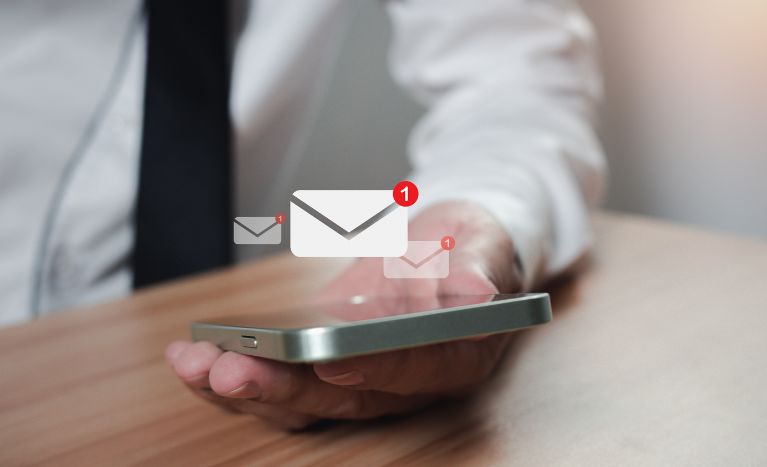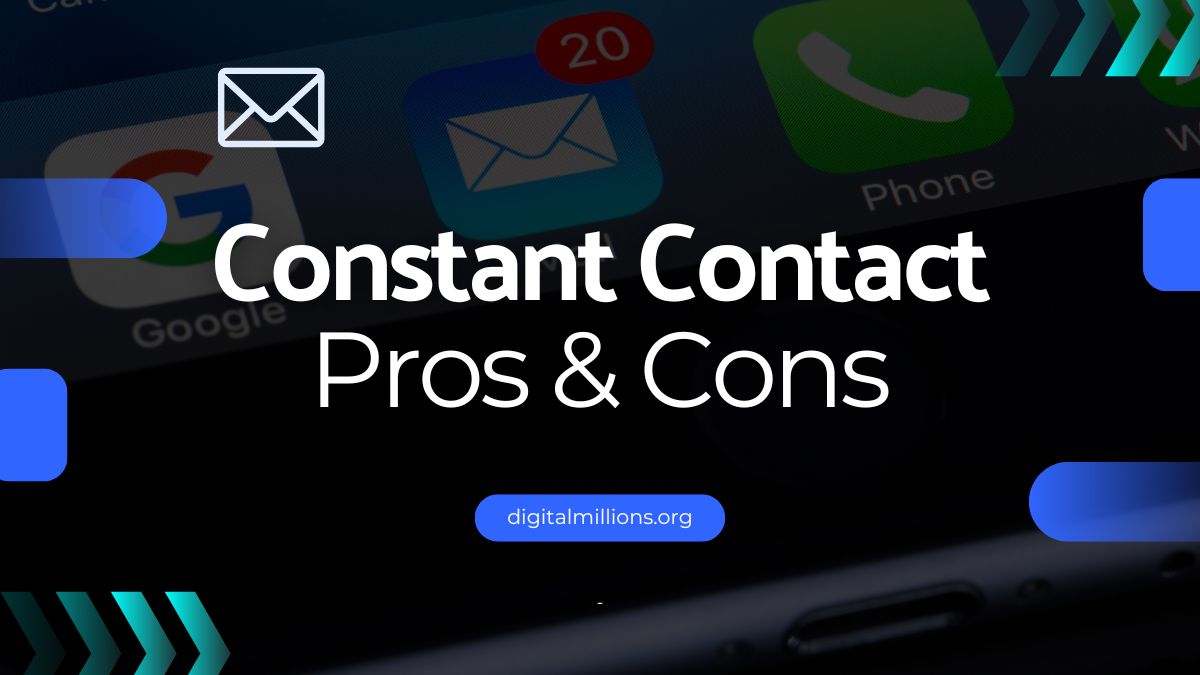Email marketing remains one of the most effective ways to reach your audience and drive sales. However, many businesses are unknowingly making costly mistakes that hinder their email marketing success. These errors can lead to decreased engagement, lower conversion rates, and ultimately, lost revenue.
In this comprehensive guide, we’ll explore the 10 most common email marketing mistakes that could be costing you a lot of money.
By understanding and addressing these issues, you’ll be able to optimize your email campaigns, boost your ROI, and achieve better results.
Here’s what you can expect in this article:
- Insight into critical email marketing errors
- Practical tips to improve your email campaigns
- Strategies to increase engagement and conversions
- Expert advice on avoiding common pitfalls
Let’s dive in and uncover the email marketing mistakes you need to avoid.
1. Neglecting List Segmentation
One of the biggest mistakes in email marketing is treating your entire subscriber list as if everyone is the same.
But your subscribers have different interests, preferences, and behaviors. Sending the same message to everyone can cause people to lose interest or even unsubscribe.
List segmentation means breaking your email list into smaller groups based on certain characteristics. This lets you send more focused and relevant content to each group, which can boost engagement and conversions.
Here are some ways to segment your email list:
- Demographics (age, gender, location)
- Purchase history
- Website behavior
- Email engagement levels
- Customer lifecycle stage
By segmenting your list, you can customize your messages to meet each group’s specific needs and interests. This personalized approach can lead to higher open rates, more clicks, and, ultimately, more conversions.
2. Poor Subject Lines
Your email subject line is the first thing recipients see, and it plays a crucial role in determining whether they’ll open your message or send it straight to the trash.
Crafting compelling subject lines is an art that many marketers overlook, resulting in low open rates and missed opportunities.
Here’s a table comparing effective and ineffective subject lines:
| Ineffective Subject Lines | Effective Subject Lines |
|---|---|
| “Newsletter #45” | “5 Ways to Boost Your Productivity Today” |
| “Special Offer Inside” | “Save 30% on Your Favorite Products – 24 Hours Only!” |
| “Important Update” | “Your Account: Action Required to Maintain Service” |
To create subject lines that grab attention and entice opens:
- Keep them short and concise (40-50 characters)
- Use action-oriented language
- Create a sense of urgency or curiosity
- Personalize when possible
- Avoid spam trigger words
Remember, your subject line is your first impression. Make it count!
3. Ignoring Mobile Optimization
In today’s mobile-first world, failing to optimize your emails for mobile devices is a critical mistake. With over 60% of email opens occurring on mobile devices, not having a mobile-friendly design can result in poor user experience and lost conversions.
Mobile optimization involves more than just making your emails responsive.
Consider the following aspects:
- Use a single-column layout for easy scrolling
- Increase font sizes for better readability on small screens
- Make buttons and links easily tappable
- Optimize images for faster loading
- Keep subject lines short to avoid truncation on mobile devices
By making sure your emails look good and work well on both desktop and mobile devices, you’ll give all your subscribers a smooth experience, no matter how they check their emails.
4. Inconsistent Sending Schedule
Sending emails sporadically or too frequently can hurt your email marketing efforts.
An inconsistent sending schedule can lead to subscribers forgetting about your brand or becoming overwhelmed with too many messages.
To avoid this mistake:
- Develop a consistent email schedule (e.g., weekly, bi-weekly, monthly)
- Communicate your sending frequency to subscribers when they sign up
- Stick to your schedule to build anticipation and trust
- Monitor engagement metrics to find the optimal sending frequency for your audience
Quality is more important than quantity. It’s better to send fewer, high-quality emails than to bombard your subscribers with content they don’t find valuable.
5. Lack of Personalization
Generic, one-size-fits-all emails are a thing of the past.
Today’s consumers expect personalized experiences, and failing to deliver on this expectation can result in lower engagement and conversions.
Personalization goes beyond just using the subscriber’s name in the greeting. Here are some ways to incorporate personalization into your email marketing:
- Use dynamic content based on subscriber preferences or behavior
- Recommend products based on past purchases
- Send triggered emails based on specific actions (e.g., abandoned cart, birthday)
- Tailor content to the subscriber’s lifecycle stage
Here’s a table showing the impact of personalization on email marketing metrics:
| Metric | Non-Personalized | Personalized | Improvement |
|---|---|---|---|
| Open Rate | 18% | 26% | +44% |
| Click-Through Rate | 2.5% | 8% | +220% |
| Conversion Rate | 1.2% | 6% | +400% |
In short, if you leverage data and technology to create personalized email experiences, you can significantly improve your email marketing results.
6. Overlooking Email Design
While content is crucial, the design of your emails plays a significant role.
Poor email design can make your content hard to read, confusing, or unappealing, leading to lower engagement and conversions.
Key elements of effective email design include:
- Clean and consistent branding
- Clear hierarchy of information
- Ample white space for improved readability
- High-quality, relevant images
- Prominent and easily clickable call-to-action buttons
When designing your emails, always keep your audience and the purpose of the email in mind. A well-designed email should guide the reader’s eye to the most important information and make it easy for them to take the desired action.
7. Failing to Clean Your Email List
Having a large email list might seem impressive, but if many of those subscribers are inactive or invalid, you’re wasting time and resources.
Plus, it could hurt your sender reputation. Regularly cleaning your list is important to keep a healthy and active group of subscribers.
Here’s why you should clean your email list:
- Improve deliverability rates
- Increase open and click-through rates
- Reduce spam complaints
- Lower email marketing costs
- Get more accurate campaign metrics
To clean your list:
- Remove hard bounces immediately
- Re-engage inactive subscribers with a win-back campaign
- Use double opt-in to ensure valid email addresses
- Implement an unsubscribe process that’s easy to use
Keep in mind that it’s a lot better to have a smaller list of highly engaged subscribers than a large list of uninterested or invalid contacts.
8. Not Optimizing for Deliverability
Even if you’ve crafted the perfect email, it won’t matter if it doesn’t reach your subscribers’ inboxes. Poor email deliverability can significantly impact the success of your campaigns and damage your sender reputation.
To optimize your email deliverability:
- Use a reputable email service provider
- Authenticate your emails (SPF, DKIM, DMARC)
- Maintain a good sender reputation
- Monitor your deliverability metrics and address issues promptly
- Avoid spam trigger words in your subject lines and content
Here’s a table showing the impact of deliverability on email marketing performance:
| Deliverability Rate | Open Rate | Click-Through Rate | Conversion Rate |
|---|---|---|---|
| 98% | 22% | 3.5% | 1.8% |
| 90% | 18% | 2.8% | 1.2% |
| 80% | 14% | 2.0% | 0.8% |
By focusing on deliverability, you ensure that your carefully crafted emails have the best chance of reaching your subscribers and generating results.
9. Insufficient Testing and Analytics
Many marketers make the mistake of sending emails without proper testing or failing to analyze the results of their marketing campaigns.This can lead to missed opportunities for improvement and continued underperformance.
To avoid this mistake:
- Conduct A/B tests on subject lines, content, and design elements
- Use email preview tools to check how your emails appear across different devices
- Monitor key metrics such as open rates, click-through rates, and conversions
- Use heat maps to understand how subscribers interact with your emails
- Regularly review and act on your analytics to improve future campaigns
Email marketing is an iterative process. Continuous testing and analysis are crucial for optimizing your campaigns and achieving better results over time.
10. Neglecting to Include Clear CTAs
A common email marketing mistake is failing to include clear and compelling calls-to-action (CTAs) in your emails. Without a strong CTA, your subscribers may not know what action you want them to take, resulting in missed conversion opportunities.
Tips for creating effective CTAs:
- Use action-oriented language (e.g., “Shop Now,” “Get Started,” “Learn More”)
- Make your CTAs visually prominent with contrasting colors or buttons
- Place your primary CTA above the fold
- Use urgency or scarcity to encourage immediate action
- Ensure your CTAs are relevant to the email content and subscriber segment
By including clear and compelling CTAs in your emails, you guide your subscribers towards the desired action, increasing the likelihood of conversions.
Conclusion – Email Marketing Mistakes
Email marketing is still a strong way to connect with your audience and make money. But, to get the most out of your campaigns, you should avoid these mistakes.
You can improve your email marketing a lot by focusing on key areas like list segmentation, personalization, mobile optimization, and clear calls-to-action (CTAs).
Keep in mind that successful email marketing is an ongoing process.
You need to keep testing, analyzing, and refining your strategies. Take some time to look at how you’re currently doing email marketing and find areas where you can do better. And, don’t let these common email marketing mistakes cost you money.
Frequently Asked Questions
Why is Email List Segmentation Important?
Email list segmentation is very important because it helps you send more relevant content to different groups of subscribers. By splitting your email list based on things like age, past purchases, or how often they interact with your emails, you can make your messages fit each group’s needs and interests.
This personalized approach usually results in higher open rates, click-through rates, and conversions, which makes your email marketing campaigns more effective overall.
How Can I Improve My Email Subject Lines?
To improve your email subject lines, focus on creating concise, compelling, and relevant phrases that grab attention and entice opens. Use action-oriented language, create a sense of urgency or curiosity, and personalize when possible.
Avoid spam trigger words and keep your subject lines under 50 characters to prevent truncation on mobile devices. A/B testing different subject lines can also help you identify what resonates best with your audience.
What’s the Ideal Frequency for Sending Marketing Emails?
The ideal frequency for sending marketing emails varies depending on your audience, industry, and the type of content you’re sharing.
However, a good starting point is to send emails once or twice a week. Monitor your engagement metrics, such as open rates and unsubscribe rates, to find the optimal frequency for your specific audience. It’s also a good practice to let subscribers choose their preferred frequency when they sign up or through preference centers.
How Can I Improve Email Deliverability?
To improve email deliverability, start by using a reputable email service provider and authenticating your emails with SPF, DKIM, and DMARC protocols. Maintain a clean email list by regularly removing inactive subscribers and hard bounces.
Avoid using spam trigger words in your subject lines and content.
Monitor your sender reputation and address any issues promptly.
Additionally, encourage subscribers to add your email address to their safe senders list to ensure your messages reach their inbox.





